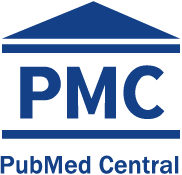New World Health Organization guideline on anemia cut-off points: implications for children aged 6-35 months in Peru
DOI:
https://doi.org/10.17843/rpmesp.2025.422.14028Keywords:
Hemoglobin, Anemia, Children, PeruAbstract
Objectives. To compare annual national and regional prevalence rates of anemia, using the 2001 guideline versus the new 2024 guideline in children aged 6 to 35 months residing in Peru between 2009 and 2023. To assess whether differences exist between guidelines vary by region, setting, or year. Materials and methods. Secondary analysis of the Demographic and Family Health Survey (continuous national random sample, stratified and clustered). Hemoglobin was measured in capillary blood using Hemocue. We applied an equation (and/or table) for altitude adjustment and a cutoff point for each guideline. We calculated 95% confidence intervals [95% CI]. Differences were evaluated according to region, setting, and/or year using a generalized linear model, calculating extremes and quartiles. Estimates and models were weighted. Results. We analyzed 120,711 children. The difference in prevalence was -6.3 [-6.6 to -6.0], p<0.001, varying by region (p<0.001), region-year (p=0.004), and region-setting (p<0.001), between -40.6 and 11.0. The percentage of children whose diagnosis differed was 11.0 [10.7 to 11.2], (p<0.001), varying between 0.0 and 40.6. The difference between the table and the equation was -3.8 [-4.0 to -3.6]. Conclusions. The prevalence differs with the new guideline (generally decreasing, but may increase), with variable differences according to region, setting, and year. The percentage with a different diagnosis also varies. These differences are of great importance for health, in some cases changing the problem from severe to moderate. The table calculation underestimates the equation calculation. Literature supports the direction of the correction, but not its magnitude.
Downloads
References
World Health Organization (WHO). Nutritional anaemias: tools for effective prevention and control [Internet]. Geneva, CH: WHO; 2017 [citado el 7 de noviembre de 2019]. Disponible en: http://www.who.int/nutrition/publications/micronutrients/anaemias-tools-prevention-control/en/.
Perú, Ministerio de Salud (MINSA). Decreto Supremo N.° 002-2024-SA Aprobar el Plan Multisectorial para la Prevención y Reducción de la Anemia Materno Infantil en el Perú. Periodo 2024-2030, que como Anexo forma parte integrante del presente Decreto Supremo.
[Internet]. ene 24, 2024. Disponible en: https://www.gob.pe/institucion/minsa/normas-legales/5093832-002-2024-sa.
Universidad Peruana Cayetano Heredia. Grupo de Trabajo de Anemia, Ochoa Woodell T, Baiocchi Ureta N, Gonzáles Rengifo GF, Huicho Oriundo L, Marull Espinoza MV, et al. Anemia Infantil: Retos para su Control en el Perú. Informe Final [Internet]. Lima, PE:
UPCH; 2020 mar. Disponible en: https://drive.google.com/file/d/1lijM5AG-T8Cn8Zj5TpwY0uhU81nAWhFo/view?usp=drive_link.
Colegio Médico del Perú (CMP). Informe del Seminario - La Problemática de la Anemia Infantil en el Perú: Situación y Retos, una
nueva perspectiva [Internet]. Lima, PE: CMP; 2023 nov. Disponible en: https://www.cmp.org.pe/wp-content/uploads/2023/11/INFORME-DEL-SEMINARIO-LA-ANEMIA-INFANTIL-EN-EL-PERU.pdf.
World Health Organization (WHO). Guideline on haemoglobin cutoffs to define anaemia in individuals and populations [Internet]. Geneva: World Health Organization; 2024 [citado el 3 de mayo de 2024]. (WHO Guidelines Approved by the Guidelines Review Committee). Disponible en: https://www.who.int/publications/i/item/9789240088542.
United Nations Children’s Fund (UNICEF), United Nations University (UNU), World Health Organization (WHO). Iron Deficiency Anaemia Assessment, Prevention, and Control: A guide for programme managers [Internet]. Geneva, CH: WHO; 2001. Report No.: WHO/NHD/01.3. Disponible en: https://www.who.int/publications/m/item/iron-children-6to23--archived-iron-deficiency-anaemia-assessment-prevention-and-control.
Braat S, Fielding KL, Han J, Jackson VE, Zaloumis S, Xu JXH, et al. Haemoglobin thresholds to define anaemia from age 6 months to 65 years: estimates from international data sources. Lancet Haematol. 2024;S2352-3026(24)00030-9. doi: 10.1016/S2352-3026(24)00030-9.
Kanu FA, Jefferds MED, Williams AM, Addo OY, Suchdev PS, Sharma AJ. Association between Hemoglobin and Elevation among Schoolaged Children: A Verification of Proposed Adjustments. Am J Clin Nutr. 2023;118(1):114–20. doi: 10.1016/j.ajcnut.2023.04.014.
Sharma AJ, Addo OY, Mei Z, Suchdev PS. Reexamination of hemoglobin adjustments to define anemia: altitude and smoking. Ann N Y
Acad Sci. 2019;1450(1):190–203. doi: 10.1111/nyas.14167.
Perú, Ministerio de Salud (MINSA). Resolución Ministerial N.° 251-2024-MINSA Aprobar la NTS N° 213-MINSA/DGIESP-2024, Norma Técnica de Salud: Prevención y control de la anemia por deficiencia de hierro en el niño y la niña, adolescentes, mujeres en edad fértil, gestantes y puérperas, que como Anexo forma parte integrante de la presente Resolución Ministerial y que se publica en la sede digital del Ministerio de Salud [Internet]. abr 10, 2024. Disponible en: https://www.gob.pe/institucion/minsa/normas-legales/5440166-251-2024-minsa.
Jorgensen JM, Crespo-Bellido M, Dewey KG. Variation in hemoglobin across the life cycle and between males and females. Ann N Y Acad Sci. 2019;1450(1):105–25. doi: 10.1111/nyas.14096.
Beutler E, Waalen J. The definition of anemia: what is the lower limit of normal of the blood hemoglobin concentration?. Blood. 2006;107(5):1747–50. doi: 10.1182/blood-2005-07-3046.
Addo OY, Yu EX, Williams AM, Young MF, Sharma AJ, Mei Z, et al. Evaluation of Hemoglobin Cutoff Levels to Define Anemia Among Healthy Individuals. JAMA Netw Open. 2021;4(8):e2119123. doi: 10.1001/jamanetworkopen.2021.19123.
Sachdev HS, Porwal A, Acharya R, Ashraf S, Ramesh S, Khan N, et al. Haemoglobin thresholds to define anaemia in a national sample
of healthy children and adolescents aged 1-19 years in India: a population-based study. Lancet Glob Health. 2021;9(6):e822–31. doi: 10.1016/S2214-109X(21)00077-2.
Hawkins WW, Speck E, Leonard VG. Variation of the hemoglobin level with age and sex. Blood. 1954;9(10):999–1007.
Burman D. Haemoglobin levels in normal infants aged 3 to 24 months, and the effect of iron. Arch Dis Child. 1972;47(252):261–71.
Dallman PR, Siimes MA. Percentile curves for hemoglobin and red cell volume in infancy and childhood. J Pediatr. 1979;94(1):26–31.
Yip R, Johnson C, Dallman PR. Age-related changes in laboratory values used in the diagnosis of anemia and iron deficiency. Am J Clin Nutr. 1984;39(3):427–36. doi: 10.1093/ajcn/39.3.427.
Emond AM, Hawkins N, Pennock C, Golding J. Haemoglobin and ferritin concentrations in infants at 8 months of age. Arch Dis Child.
;74(1):36–9.
Sherriff A, Emond A, Hawkins N, Golding J. Haemoglobin and ferritin concentrations in children aged 12 and 18 months. ALSPAC Children in Focus Study Team. Arch Dis Child. 1999;80(2):153–7.
Jopling J, Henry E, Wiedmeier SE, Christensen RD. Reference ranges for hematocrit and blood hemoglobin concentration during the neonatal period: data from a multihospital health care system. Pediatrics. 2009;123(2):e333-337. doi: 10.1542/peds.2008-2654.
Hurtado A, Merino C, Delgado E. Influence of anoxemia on the hemopoietic activity. Arch Intern Med. 1945;75(5):284–323. doi: 10.1001/archinte.1945.00210290007002.
Centers for Disease Control (CDC). CDC criteria for anemia in children and childbearing-aged women. MMWR Morb Mortal Wkly Rep. 1989;38(22):400–4.
Gassmann M, Mairbäurl H, Livshits L, Seide S, Hackbusch M, Malczyk M, et al. The increase in hemoglobin concentration with altitude varies among human populations. Ann N Y Acad Sci. 2019;1450(1):204–20. doi: 10.1111/nyas.14136.
Mairbäurl H, Gassmann M, Muckenthaler MU. Geographical ancestry affects normal hemoglobin values in high-altitude residents. J
Appl Physiol Bethesda Md 1985. 2020;129(6):1451–9. doi: 10.1152/japplphysiol.00025.2020.
Aparco JP, Santos-Antonio G, Bautista-Olortegui W, Alvis-Chirinos K, Velarde-Delgado P, Hinojosa-Mamani P, et al. Estado de hierro y propuesta de ajuste de hemoglobina por altitud en niños de 6 a 8 meses residentes en Lima, Arequipa, Cusco y Puno. Rev Peru Med Exp Salud Pública. 2023;40(4):395–405. doi: 10.17843/rpmesp.2023.404.12573.
Dirren H, Logman MH, Barclay DV, Freire WB. Altitude correction for hemoglobin. Eur J Clin Nutr. 1994;48(9):625–32.
Bartolo-Marchena M, Pajuelo-Ramírez J, Obregón-Cahuay C, Bonilla Untiveros C, Racacha-Valladares E, Bravo-Rebatta F. Propuesta de factor de corrección a las mediciones de hemoglobina por pisos altitudinales en menores de 6 a 59 meses de edad, en el Perú. An Fac Med. 2017;78(3):281–6. doi: 10.15381/anales.v78i3.13759.
Ocas-Córdova S, Tapia V, Gonzales GF. Hemoglobin Concentration in Children at Different Altitudes in Peru: Proposal for [Hb] Correction for Altitude to Diagnose Anemia and Polycythemia. High Alt Med Biol. 2018;19(4):398–403. doi: 10.1089/ham.2018.0032.
Accinelli RA, Leon-Abarca JA. Age and altitude of residence determine anemia prevalence in Peruvian 6 to 35 months old children. PloS One. 2020;15(1):e0226846. doi: 10.1371/journal.pone.0226846.
Perú, Instituto Nacional de Estadística e Informática (INEI). Perú: Encuesta Demográfica y de Salud Familiar - ENDES 2022 [Internet].
Lima, PE: INEI; 2023 may. Disponible en: https://www.gob.pe/institucion/inei/informes-publicaciones/4233597-peru-encuesta-demografica-y-de-salud-familiar-endes-2022.
Perú, Instituto Nacional de Estadística e Informática (INEI). Perú: Encuesta Demográfica y de Salud Familiar - ENDES 2023 [Internet].
Lima, PE: INEI; 2024 may. Disponible en: https://www.gob.pe/institucion/inei/informes-publicaciones/5601739-peru-encuesta-demografica-y-de-salud-familiar-endes-2023.
Perú, Instituto Nacional de Estadística e Informática (INEI). Perú: Estimaciones y Proyecciones de Población, 1950-2050 [Internet]. Lima, PE: INEI; 2009 mar. (Boletín de Análisis Demográfico). Report No.: 36. Disponible en: http://proyectos.inei.gob.pe/web/biblioineipub/bancopub/Est/Lib0845/index.htm.
Nestel P. Adjusting Hemoglobin Values in Program Surveys [Internet]. Washington, DC: INACG; 2002 jun. Disponible en: https://pdf.usaid.gov/pdf_docs/Pnacq927.pdf.
Lumley T. Complex surveys: a guide to analysis using R. Hoboken, N.J: John Wiley; 2010. 276 p. (Wiley series in survey methodology).
R Core Team. R: A language and environment for statistical computing [Internet]. Vienna, Austria: R Foundation for Statistical Computing; 2024 [citado el 10 de enero de 2025]. Disponible en: http://www.R-project.org.
Perú, Instituto Nacional de Estadística e Informática (INEI). Metodología del indicador de anemia en niñas y niños de 6 a 59 meses [Internet]. Lima, PE: INEI; 2024 mar [citado el 11 de enero de 2025]. Disponible en: https://www.gob.pe/institucion/inei/informes-publicaciones/5387581-metodologia-del-indicador-de-anemia-en-ninas-y-ninos-de-6-a-59-meses.
Perú, Instituto Nacional de Estadística e Informática (INEI). PERÚ: Indicadores de Resultados de los Programas Presupuestales 2023 - Encuesta Demográfica y de Salud Familiar [Internet]. Lima, PE: INEI; 2024 mar. Disponible en: https://proyectos.inei.gob.pe/endes/ppr.asp.
Perú, Instituto Nacional de Estadística e Informática (INEI). Encuesta Demográfica y de Salud Familiar - Sintaxis de Programas de los Indicadores Identificados en los Programas Estratégicos - ENDES Línea de Base [Internet]. Lima, PE: INEI; 2008 ago. Disponible en: https://proyectos.inei.gob.pe/endes/recursos/endes2008_sintaxis.pdf.
Campos Sánchez M, Cordero Muñoz L, Velásquez Hurtado E, Baiocchi Ureta N, Miranda Cuadros M, Sánchez Griñán MI, et al. New WHO guideline on the definition of anemia: implications for 6-35 months old children in Peru 2009-2023 [Internet]. medRxiv; 2024 [citado el 29 de mayo de 2024]. p. 2024.05.28.24308069. doi: 10.1101/2024.05.28.24308069.
Vásquez-Velásquez C, Tapia V, Gonzales GF. La nueva guía sobre los puntos de corte de la hemoglobina para definir anemia en individuos y poblaciones. Rev Soc Peru Med Interna. 2024;37(1):15–20. doi: 10.36393/spmi.v37i1.844.
Hernández-Vásquez A, Guerra Valencia J, Vargas-Fernández R. ¿Cuánto ha cambiado la prevalencia de anemia en mujeres peruanas con los criterios de la OMS 2024? análisis de la ENDES 2023. Rev Peru Med Exp Salud Pública. 2024;41(3):324. doi: 10.17843/rpmesp.2024.413.13993.
Hernández-Vásquez A, Vargas-Fernández R, Guerra Valencia J. Change in the prevalence of anemia in children aged 6-59 months using the new World Health Organization 2024 criteria. Ann N Y Acad Sci. 2024;1541(1):202–18. doi: 10.1111/nyas.15239.
Engle-Stone R, Aaron GJ, Huang J, Wirth JP, Namaste SM, Williams AM, et al. Predictors of anemia in preschool children: Biomarkers
Reflecting Inflammation and Nutritional Determinants of Anemia (BRINDA) project. Am J Clin Nutr. 2017;106(Suppl 1):402S-415S. doi: 10.3945/ajcn.116.142323.
Downloads
Published
Issue
Section
License
Copyright (c) 2025 Miguel Campos-Sánchez; Luis Cordero-Muñoz; Enrique Velásquez-Hurtado, Nelly Baiocchi-Ureta, Marianella Miranda-Cuadros, María Inés Sánchez-Griñán, Walter Valdivia-Miranda

This work is licensed under a Creative Commons Attribution 4.0 International License.




























